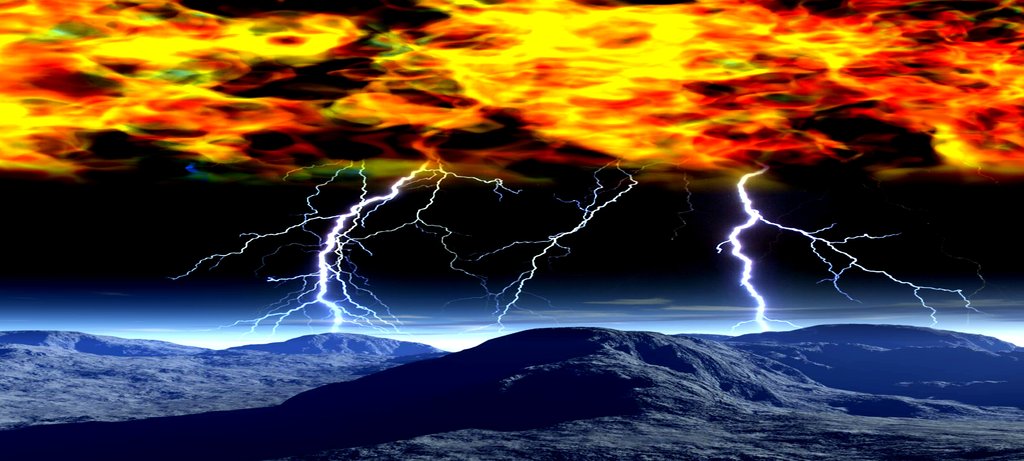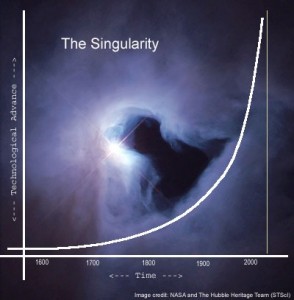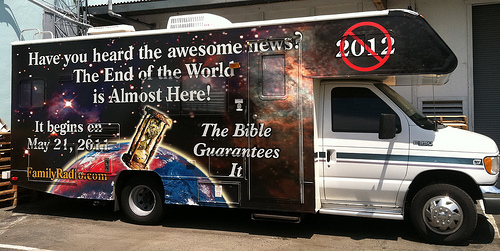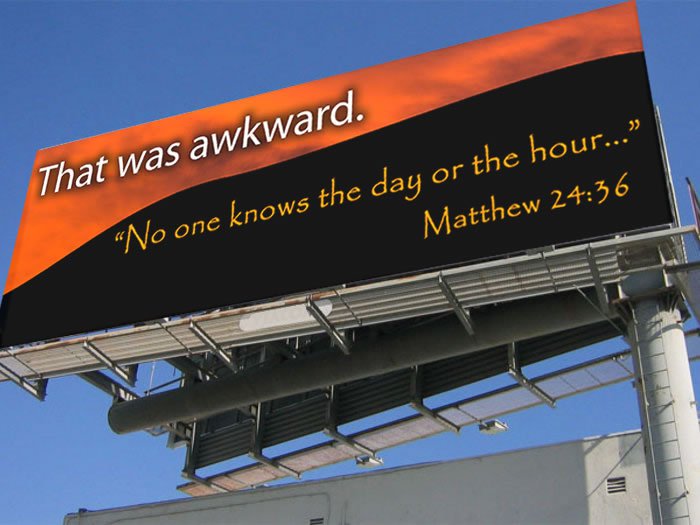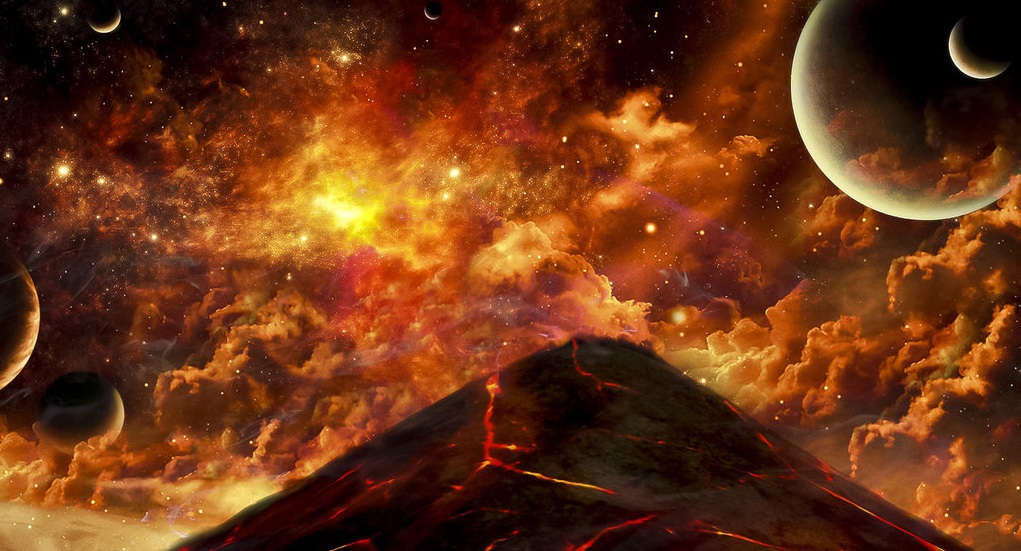
ARMAGEDDON IN REVELATION 16:16
“And they assembled them at the place that in Hebrew is called Harmagedon.” (NRSV)
This may come as a shock to many of you but a principle tenet of this treatment is that Armageddon has nothing to do with the valley of Megiddo. Bear with me, I realize this might challenge some long held prophetic scenarios but it is actually more coherent with scripture. It involves some technical discussion of original languages but the end result is worth the trouble. The cryptic passage in question reads “And they assembled them at the place that in Hebrew is called Armageddon.” (Re 16:16) Remember that the book of Revelation was composed in Greek. The term in Greek, Ἃρ Μαγεδών, is problematic in that it is a transliteration of a Hebrew term yet we find no immediate Old Testament analog. The rough breathing mark before the vowel is an ‘h’ sound. Thus, it is better represented in English as Har Magedon. In fact, the NRSV translation reads “…that in Hebrew is called Harmagedon.” Torrey argued that the division into two words is required by the Semitic trilateral root structure. The former word Ἃρ or “Har” means “mountain”, הַר in Hebrew.[1] Accordingly, the remainder is Μαγεδών but the last two letters ‘ών’ are merely a suffix for a place name.[2] Hence, all that remains is a Greek transliteration of a Hebrew word for a mountain which was written as Μαγεδ.
Many respected dispensational scholars (Missler; Pentecost; Walvoord; Fruchtenbaum) identify Armageddon with the area of the Galilean city of Megiddo and believe that a literal military battle will be fought in that area. For instance the respected Messianic scholar, Arnold Fruchtenbaum, argues:
Megiddo was a strategic city located at the western end of the Valley of Jezreel, guarding the famous Megiddo Pass into Israel’s largest valley. One can see the entire Valley of Jezreel from the mount upon which the city of Megiddo stood. So what is known as the Valley of Armageddon in Christian circles is actually the biblical Valley of Jezreel. The term Armageddon is never applied to the valley itself, but only to the mount at the western end.[3]
This sounds convincing at first. Yet, the western end of the Jezreel valley consists of Mount Tabor and Mount Gilboa. It is flanked on the south by Mount Carmel. “Mount Megiddo” appears to have been posthumously entitled to fit the interpretation. The thing that sticks out in his comment is “in Christian circles.” Apparently this idea became widely accepted in dispensational scholarship since it appeared in the New Scofield Reference Bible notes for Judges 5:19 and Revelation 16:16.[4] Don’t get me wrong, I hold a dispensational view. But the difficulty is that there are no scholarly sources that corroborate this naming convention prior to modern dispensationalism. Of course, this view has now become a meme through the bestselling LaHaye and Jenkins Left Behind book series. The idea behind the traditional “Megiddo” rendering is that the Greek appears as if it could be a possible transliteration for מְגִדֹּו (meḡid∙dô), and that it was the site of some important battles in Israelite history (Josh 12:21; Judg 5:19, 2 Kings 9:27, 23:29-30).[5] However, the problems demonstrably outweigh the advantages.
The ten thousand pound elephant in the room is that there simply is no such place as Mount Megiddo. In the Bible, Megiddo is twice represented as “the plain of Megiddo” (Zech 12:11; 2 Chron. 35:22). The only mountains near it have their own well established names. In truth, during the Apostle John’s day the only actual hill at Megiddo was a measly seventy foot high artificial mound known as a ‘tell’ in archeology.[6] Furthermore, by using Google earth for geographic investigation, one can see that the town of Megiddo is a full 54 miles in a straight line from the Mount of Olives where the Lord defeats the armies in Zechariah 14. Thus a rendering of Megiddo makes the Day of the Lord passages centering on Jerusalem unrealistically distant. In contrast, the Mount of Olives where the Lord lands with his army is a mere one third mile from Mount Zion. Because of the geography and the fact that the text specifies a mountain, the Megiddo plain or Jezreel valley is not a viable option. We now explore the more plausible alternatives which have been suggested for a reverse Hebrew rendering of the Greek Μαγεδ.
The reference is cryptic and has long evaded unambiguous definition. In effect, scholars must now attempt to reverse transliterate from Greek back to Hebrew. The early commentators Origen, Eusebius and Jerome did not even think Armageddon was the name of an actual place.[7] R.H. Charles ventured,” it is possible that Ἅρ Μαγεδών may be a corruption either for הַר מִגְדּוֹ = ‘his fruitful mountain.’”[8] This connects it to Jerusalem and coheres nicely to Old Testament “Day of the Lord” texts. Another suggestion is that the Hebrew gādad, (a marauding band, troop)[9] appended to har (“mountain”) would mean “marauding mountain” and would perhaps allude to Jeremiah’s “destroying mountain” (Jer 51:25).[10] Another similar idea suggested by Johnson stems from the secondary sense of the Hebrew gādad that means “to gather in troops or bands” because one can make a noun form a verb in Hebrew by adding the prefix ‘ma’ rendering magēd, “a place of gathering in troops,”[11] which coheres nicely with the context of Revelation 16. While these all seem plausible, in seeming frustration, Robert Mounce surmises:
Wherever it takes place, Armageddon is symbolic of the final overthrow of all the forces of evil by the might and power of God. The great conflict between God and Satan, Christ and Antichrist, good and evil, that lies behind the perplexing course of history will in the end issue in a final struggle in which God will emerge victorious and take with him all who have placed their faith in him. This is Har-Magedon. [12]
While this is surely correct, God has given us this strange name for some purpose albeit enigmatic. Still yet, there is a solution which offers more explanatory scope than the above.
Biblical scholar Charles C. Torrey proposed a solution based on Hebrew mythology back in 1938 which is gaining wider acceptance. Torrey refers to an article in the Hastings Dictionary of the Bible that posited an alternate rendering by Hommel. As far back as the nineteenth century German scholars had made a connection to Isaiah 14:13 but ancient Near Eastern scholarship was still in its infancy. He pointed out that interpreters lacking an intimate knowledge of both Hebrew and Greek miss that the Greek letter gamma, ‘γ’ in Μαγεδών or the ‘g’ in Megiddo can represent the Hebrew consonant ayin, ע. In other words, New Testament interpreters think only “Megiddo” being unaware of the possibility that John was Hellenizing as well as transliterating. Accordingly, Torrey postulated מֹועֵד (mô∙ʿēḏ) which infers the “Mount of Assembly” mentioned in Isaiah 14:13. The increasing consensus amongst modern scholars suggests that this view has much to commend it. Hebrew Bible and Semitic languages scholar Michael Heiser argues:
The Hebrew letter ע. מֹועֵד (mô∙ʿēḏ) is transliterated with the sign (ʿ ) because the English alphabet does not have this sound or letter in its alphabet. Neither does Greek, and the Greeks used “g” to denote its sound. Hence “Gomorrah” in English letters is spelled עֲמֹרָה in Hebrew. Therefore there is every reason to suspect that “Armageddon” does in fact mean har mô∙ʿēḏ / “Mount of Assembly.”[14]
Thus, we have an actual mountain referenced in the Hebrew Bible which matches John’s transliteration. American theologian and Old Testament scholar Meredith Kline concurs stating “Representation of the consonant cayin by Greek gamma is well attested. Also, in Hebrew -on is an affirmative to nouns, including place names.”[15] This rendering was also suggested by Mathias Rissi in his Revelation study Time and History published in 1966.[16] Because of its scholarly support and convincing explanatory scope the “mount of assembly” rendering is the focus of this presentation.
….to be continued with part 3: The Cosmic Mountain
[1] James Swanson, Dictionary of Biblical Languages With Semantic Domains: Hebrew (Old Testament), electronic ed. (Oak Harbor: Logos Research Systems, Inc., 1997).
[2] Meredith Kline, “Har Magedon: The End of the Millennium.” Journal of the Evangelical Theological Society 39, 2.I (1996): 208.
[3]Arnold G. Fruchtenbaum, The Footsteps of the Messiah: A Study of the Sequence of Prophetic Events, Rev. ed. (Tustin, CA: Ariel Ministries, 2003), 311.
[4] Alan F. Johnson, “Revelation” in The Expositor’s Bible Commentary, Volume 12: Hebrews Through Revelation, ed. Frank E. Gaebelein (Grand Rapids, MI: Zondervan Publishing House, 1981), 551.
[5]Johnson, “Revelation,” 551.
[6]Robert H. Mounce, The Book of Revelation, The New International Commentary on the New Testament (Grand Rapids, MI: Wm. B. Eerdmans Publishing Co., 1997), 301.
[7] Torrey, “Armageddon,” 238.
[8]R.H. Charles, A Critical and Exegetical Commentary on the Revelation of St John (Edinburgh: T&T Clark International, 1920), 2:50.
[9]R. Laird Harris, Robert Laird Harris, Gleason Leonard Archer and Bruce K. Waltke, Theological Wordbook of the Old Testament, electronic ed. (Chicago: Moody Press, 1999, c1980), 150.
[10]Johnson, “Revelation,” 552.
[11] Ibid.
[12] Mounce Revelation, 302.
[13] Torrey, “Armageddon,” 245.
[14] Michael Heiser, Islam and Armageddon. Self-published book, 2002, 101.
[15] Kline, “Har Magedon,” 208.
[16] Mathias Rissi, Time and History (Louisville: John Knox Press, 1966), 84–85.

